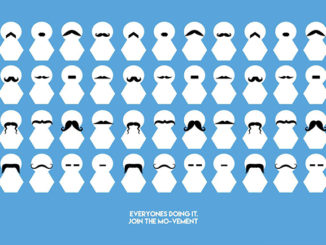
Whether we like to admit it or not, we all judge people on their appearances.
Now I’m not talking about the nitty gritty and catty thoughts about the condition of someone’s hair (although we are all guilty of that on occasion), I mean to look at the assumptions we make about someone’s character based on how they present themselves – consciously and unconsciously. What costume designer Kristin Burke calls ‘the language of clothing’.
“The language of clothing is specific, persuasive, impactful and totally silent” she said in her 2013 Tedx talk, “Most of the time we don’t even realise we are being influenced by it when it is right in front our face”.
Every day we are aware that we place people in categories based on how they dress. We are glad to admit that we would vote for the professional in a suit over the presidential candidate who rocked up in boxers and a tank top. But we are also slaves to our unconscious bias.
When faced with two well-dressed electoral candidates we like to believe that we pick our preference based on their abilities and our perceptive intelligence, but a lot of work goes into behind the scenes to manipulate us to see each person in the best light possible.
Take a moment to think of Hilary Clinton. What colour do you see her in, red, white or royal blue? These are the three most common colours she wore while campaigning to be president of the United States, and they also happen to be the three colours of the American flag.
Clinton worked alongside designer for ‘professional’ women Nina McLemore, who’s ethos is to create clothes that enable to women to ‘advance their careers’. So relating Hilary to the American colours was a technique to help her political ambition.
McLemore creates outfits driven by market research. Her suit styles often drifts from the traditional female take on the male suit. McLemore wants her designs to enable the female form to feel comfortable pulling traditional power poses. She also rarely uses black fabric, talking to the telegraph.co.uk she said “Colour can change your attractiveness entirely and how people see you. I’ve given so many talks to law firms, accounting firms. I walk in and 70-80pc of the people are in black so of course they don’t stand out”
And this science doesn’t just apply to professional situation. In fact anybody could apply it to their personal life. Ladies, looking for love? Dress in red.
In 2014 psychologists at Central China Normal University confirmed that men find women in red more attractive. On top of that one dating websites survey (OK Cupid for the curious) showed that women who wore red in their profile pictures received higher engagement from the opposite sex. Boys however, beware. The same Chinese study showed that men who wear too much red are seen as aggressive by women.
Gentlemen, when you are ready to meet the ladies you should wear tighter fitting, good quality garments. A 1986 study found out that looser fitting clothes on guys simply equated to lower perceptions of masculinity, but the quality clothes idea, now that is where it gets interesting.
Our unconscious bias leads back further than we thought. I mean buachaillí, were you are aware that one of the physical traits you are attracted to most in a women is her hip to waist ratio? Nope, not for her Kim K curves, but because the nature in you is looking at her ability to bear a child in that area. This is some serious cave man stuff right here.
And women are no exception to their nature manipulating their judgement. Yes, we are sub consciously attracted to quality looking clothing because it signifies wealth, but not for the shallow ‘gold digger’ reasons you think. It all relates back to when women were gatherers and men were hunters (pipe down girls, we needed someone to run around for us when we incapable of walking nine months into a pregnancy) and the concept of wealth triggers the idea of boys being capable of supplying for us.
With all this in mind perhaps you will take greater care in choosing you’re outfit tomorrow morning. Of course what you wear can’t, and won’t, get you the presidency, or win over your true loves heart. But it could help you.
by Michelle Martin



